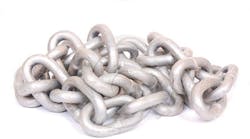When business executives—especially those not directly involved with operations, such as a CFO, CEO or general manager—think about supply chain management, functions such as forecasting, procurement, inventory management, transportation and warehousing come to mind. In fact, when I teach Supply Chain Management in the classroom most textbooks identify 15 related but discrete functions. Unfortunately, packaging is usually not included in the thought process.
In my 20 years of direct experience in packaging optimization—10 as a customer and proponent followed by 10 years as an educator and heading a packaging consulting business—I have witnessed two distinct approaches:
• Consumer product companies tend to view the determination of the shipping case as a marketing responsibility since that department drives the basic retail product attributes such as shape, size, color and number of selling units in a shipping case.
• Industrial firms that sell to other businesses tend to view the determination of the shipping case as an engineering responsibility, often with no regard to whether the individual making the decision is an industrial, mechanical or electrical engineer.
What leading edge firms such as Walmart long ago realized is that shipping case selection is a multi-functional decision that reverberates through the entire supply chain. And with today’s supply chains continuing to get more complex in channels of distribution, where products are sourced and how far they have to be transported, the selection of shipping case shape, size and strength is more difficult than ever. However, if done correctly it delivers exceptional performance and cost benefits. Here are a few real world examples from our consulting files of how the lack of integration in shipping case selection can generate negative business impact.
Unjust Desserts
The CEO of an ice cream manufacturer contacted us because his customers were complaining about significant shipping case damage. Almost all the corrugated cases in the bottom tier of each pallet load suffered creasing and crushing. When we asked the CEO what he thought the root cause of the problem was, he replied that his firm must be using cheap boxes.
In-depth analysis of the client’s material handling process and shipping case specifications determined that his boxes were designed to stack only one pallet high. When outbound trucks were all loaded two pallets high to maximize freight efficiency, almost all bottom tier cases suffered damage.
As we delved into the shipping case selection process the CEO recalled that he had challenged his purchasing department to reduce packaging costs so they had responded by specifying less robust corrugate that was cheaper. The department had in fact been rewarded with a nice bonus for their efforts. When the CEO grasped the impact of what had occurred he was really upset; the lack of integration in the shipping case selection process ultimately led to both lower quality and higher total cost.
Automotive Chain Reaction
When we recently discussed the opportunity in the shipping case selection process with the V.P. of operations for a major auto parts supplier he didn’t want to take any action because he saw the responsibility as belonging solely to his contract supplier.
“They have to have the best price to get my business so let them worry about the shipping case specifications. If they don’t get it right, they won’t be my supplier,” he said.
What the vice president didn’t realize was that the low cost position for the supplier might in fact push higher cost through the supply chain to his company because they share the same supply chain. The supplier palletized all shipments to speed up its own truck loading process. And while the distributor enjoyed similar cost benefits in its receiving process the resulting increased transportation expense caused by poor trailer cube utilization negated all those savings entirely. Since the distributor paid for all transportation his total costs were much higher than necessary. It is only through a collaborative process that the lowest total supply chain cost can be achieved.
Putting Packaging to the Test
A U.S. manufacturer of high end testing machinery asked for assistance on packaging. The test units—valued at more than $100,000 each—were being shipped to customers around the world. The manufacturer had a thriving new market in India, but the testing machinery was arriving so badly damaged it was non-functional.
The options considered by the manufacturer were: to return the units to the U.S. to be repaired and re-shipped to India in the same package that failed the first time and hope the package holds up on the second try; look for a company in India that could repair these expensive units at the customer site; or fly one of its own American experts to India to make repairs every time there was a problem.
When we inquired how the shipping case selection was determined the manufacturer informed us that the decision was made by the same engineers who designed the machinery.
To understand the root cause we got a new testing machine into our packaging lab. You can imagine the customer disappointment and concern when we showed them that their machine was unable to withstand the rigors of routine international shipping. The test unit broke in the laboratory testing process. The mechanical engineers who were so good at designing high end testing equipment had no concept of how boxes are handled and shipped once they leave the domestic market.
Key to Logistics Efficiency
As far back as the 1999 State of Logistics Report the late Bob Delaney identified integrated package design as a major opportunity for logistics efficiency. Bob’s observation was “when you do not have the package right, you pay for it every day that it moves through the supply chain.” And here we are, more than a decade later and the opportunity is to a large degree untapped in most firms.
Certainly many leading companies have tackled packaging optimization in an organized fashion. The consulting business I head has assisted on numerous complex projects. Others who “don’t get it” or just resist for unknown reasons continue to sit on the sidelines. When I speak with executives about packaging optimization I point to two keys:
• They must truly value and be focused on efficiency improvement.
• They must be able to manage change.
The first consideration is generally high on everyone’s list although I have encountered executives who don’t really give much value to efficiency improvement; it just isn’t high on their list of objectives. The second consideration has been a show stopper in many companies which just find change management too difficult to tackle. One executive told us that his company couldn’t change anything. So while we had already confirmed significant cost reduction opportunity via preliminary assessments, the process ended right there.
The Secret
So what is the secret to success on shipping case selection? The top companies have long realized two major factors.
First, while seemingly simple, this is a very complex process because so many different functions must all have inputs; typically this includes manufacturing, marketing, quality control, transportation, warehousing, purchasing, packaging engineering and may also include suppliers and customers.
Second, because the various entities have different objectives whose preference guides the process? Since business decisions are ultimately driven by dollars, getting all of the associated costs identified accurately will usually help guide the process. Companies that make poor decisions on shipping cases as outlined in my earlier examples, do so because of incomplete or inaccurate information.
In completing over 500 packaging optimization projects in the past 25 years, we’ve found that the following elements are keys to success:
• Executive sponsorship which usually means senior vice president—supply chain, COO, CFO or CEO;
• Multi-functional approach that includes all departments involved with packaging or its impact;
• Accurate detailed costs on all factors related to packaging and logistics, especially internal ones (many executives told me that since they do their own warehousing, storage and handling are done at no cost);
• Willingness to manage change. The more flexible the company, the greater the cost reduction opportunity;
• An immediacy to cost reduction. The leaders move quickly to get the savings into their pockets while others lollygag and always seem to have other priorities that keep them static;
• Resiliency to overcoming obstacles. The laggards tend to focus on the roadblocks that keep them from success (“That will never work in our firm, we tried that once before, our customers will not accept that change.”) The leaders see the same obstacles and figure out how to hurdle them. Much of that is in their mindset to business. Is the glass half full or half empty?
The Ultimate Example
The packaging optimization case that perhaps best illustrates how to deliver all of the potential opportunity inherent in packaging optimization is RG Barry, a national shoe distributor we worked with more than five years ago. The details of their project were covered by me and Matt Sullivan, former vice president of logistics for RG Barry, for national audiences at the 2010 annual conferences of the Supply Chain & Logistics Association of Canada and Council of Supply Chain Management Professionals. The basic facts are that RGB’s revenues were about $125 million and they were not profitable. Packaging optimization generated the following results:
• Cost reduction of $2.8 million for RG Barry;
• Transportation savings of $750,000 for RGB’s customers;
• RG Barry took the efficiency improvements to their two largest customers: Walmart and Target. The former gave them new business of $10 million per year and the latter rewarded them with $5 million of new business.
The message I try to impart to any company dealing with corrugated boxes, be it manufacturer, distributor, retailer or logistics service provider, is that the business improvement in both logistics performance and cost reduction is significant for everyone. Delivering results is not easy…that is why the potential is untapped in so many companies.
The bottom line is that packaging optimization is not a marketing or engineering issue…it is a supply chain opportunity.
Jack Ampuja is president of Supply Chain Optimizers (www.supplychainoptimizers.com), a packaging optimization consulting firm. He’s also executive director of the Center for Supply Chain Excellence at Niagara University.



